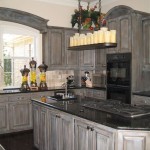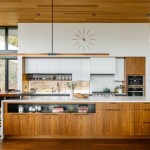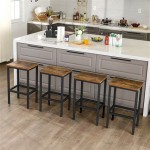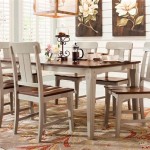Investing in a High-Quality Set of Sharp Kitchen Knives
A set of sharp kitchen knives is an indispensable investment for any home cook, from the novice to the seasoned chef. The quality of knives significantly impacts the efficiency, safety, and enjoyment of food preparation. While individual specialty knives can certainly enhance a kitchen's capabilities, a well-curated set provides a foundation for a wide range of culinary tasks. This article will explore the importance of investing in a quality knife set, the key factors to consider when choosing one, and the best practices for maintaining its sharpness and longevity.
The Importance of Sharpness: Safety and Efficiency
The most critical aspect of a kitchen knife is its sharpness. A sharp knife is not only more efficient, requiring less force to cut through food, but it is also significantly safer. Dull knives require more pressure to use, which increases the likelihood of slipping and causing injury. When a knife is sharp, the blade glides smoothly through ingredients, allowing for precise cuts and consistent results. This precision is particularly important when working with delicate foods or intricate cuts, where aesthetics and texture are paramount.
Furthermore, the physical exertion required when using a dull knife can lead to fatigue and strain, particularly during prolonged cooking sessions. A sharp knife reduces the effort needed, allowing for a more comfortable and enjoyable cooking experience. The reduced strain also contributes to better control over the knife, minimizing the risk of accidents.
From a culinary perspective, sharp knives preserve the cellular integrity of food. When a sharp blade cleanly slices through an ingredient, it minimizes bruising and damage to the cell walls. This results in better texture, flavor, and appearance in the final dish. For example, a sharp knife will allow for a clean dice of an onion, preventing the bruising that leads to a bitter taste. Similarly, when slicing tomatoes, a sharp knife will prevent the crushing and loss of juices that a dull knife often causes.
Key Components of a Quality Knife Set
A complete knife set typically includes a variety of knives designed for specific purposes. The essential components of a quality set usually feature a chef's knife, a paring knife, a serrated bread knife, and a utility knife. Some sets may also include additional knives, such as a boning knife, a carving knife, steak knives, and a honing steel or sharpening device. The type of set needed will depend on an individual's cooking habits and preferences.
The chef's knife is the workhorse of the kitchen, used for a wide range of tasks, including chopping, dicing, slicing, and mincing. A good chef's knife should be well-balanced, comfortable to hold, and capable of maintaining a sharp edge. The blade typically ranges from 8 to 10 inches in length, providing sufficient leverage and control for most tasks.
The paring knife is a smaller knife, typically with a 3 to 4-inch blade, designed for intricate tasks, such as peeling fruits and vegetables, trimming, and coring. Its smaller size and maneuverability make it ideal for tasks that require precision and dexterity.
The serrated bread knife features a long, serrated blade that is ideal for slicing bread and other baked goods without crushing them. The serrations grip the crust and prevent the knife from slipping, allowing for clean, even slices. This type of knife is also useful for slicing tomatoes and other soft-skinned fruits and vegetables.
The utility knife is a versatile knife that falls between the chef's knife and the paring knife in size. It is often used for smaller tasks that do not require the power of a chef's knife but are too large for a paring knife. Its blade typically ranges from 5 to 7 inches in length.
The materials used in the construction of a knife significantly impact its performance and durability. High-carbon stainless steel is a popular choice for knife blades due to its hardness, corrosion resistance, and ability to hold an edge. The handles are commonly made from materials such as wood, synthetic polymers, or stainless steel. The choice of handle material affects the grip, comfort, and aesthetic appeal of the knife.
Maintaining Knife Sharpness and Longevity
Even the highest-quality knives will eventually become dull with use. Regular maintenance is essential for preserving their sharpness and extending their lifespan. The two primary methods for maintaining knife sharpness are honing and sharpening. Honing realigns the blade's edge, while sharpening removes material to create a new edge.
Honing should be performed regularly, ideally before each use or after each use. A honing steel is used to realign the microscopic teeth along the blade's edge that bend and deform during use. This process restores the blade's sharpness and improves its cutting performance. The honing steel should be held at a consistent angle, typically around 15 to 20 degrees, and the knife should be drawn down the steel in a smooth, controlled motion.
Sharpening, on the other hand, is a more aggressive process that removes metal from the blade to create a new cutting edge. This is typically done using a whetstone, a sharpening steel, or an electric sharpener. The frequency of sharpening depends on the knife's usage and the type of steel. Softer steels will require more frequent sharpening than harder steels.
Proper storage is also crucial for maintaining knife sharpness and preventing damage. Knives should be stored in a knife block, on a magnetic strip, or in a dedicated drawer insert. Storing knives loosely in a drawer can damage the blades and increase the risk of injury. Avoid putting knives in the dishwasher, as the high heat and harsh detergents can dull the blades and damage the handles. Instead, hand wash knives with warm, soapy water and dry them immediately.
The cutting surface also impacts the sharpness of the knife. Avoid cutting on hard surfaces, such as granite, glass, or ceramic cutting boards, as these can quickly dull the blade. Wood or plastic cutting boards are gentler on knives and will help maintain their sharpness for longer.
By adhering to these best practices, the investment in a quality set of sharp kitchen knives will result in years of safe, efficient, and enjoyable food preparation.

Vg 10 Damascus Steel 6 Knife Set F N Sharp Kitchen Knives

Odoroku 6 Pieces Professional Kitchen Knives Set With Giftbox Stainless Steel Forged Knife Sharp Chef For Cooking Paring

3 Pcs Chef Knife Set Japanese Damascus Sharp Stainless Steel Kitchen Knives Ebay
German Craft Kitchen Knife Set Home Chopping Slicing Black Gift Box

6 Types Of Knives Every Kitchen Needs F N Sharp Blog

Odoroku 6 Pieces Professional Kitchen Knives Set With Giftbox Stainless Steel Forged Knife Sharp Chef For Cooking Paring

5 Piece All Stainless Steel Kitchen Knife Set Ultra Sharp Heavy Duty 5pcs With Plastic Block And Knives Price Made In Com

Kitchen Steak Knife Set Utility Knives Ultra Sharp High Carbon Stainless Steel With Ergonomic Handles Cookware And Price Made In Com
So 5pcs High Carbon Stainless Steel Kitchen Knife Set German Technology Cooking Knives Cutting Scissor Tools Shopee Singapore

Vg 10 Damascus Steel 6 Knife Set F N Sharp Kitchen Knives








